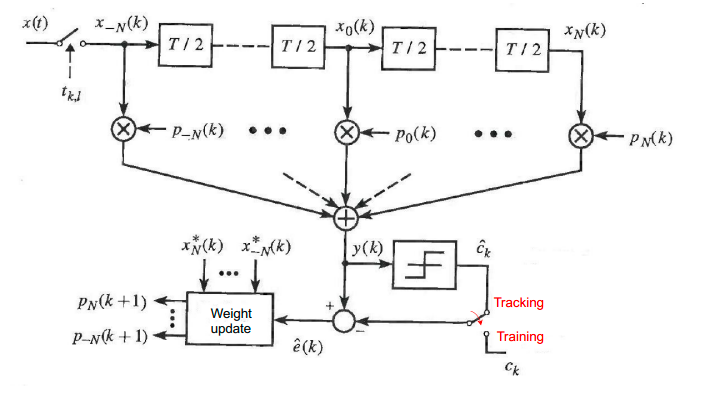I'm trying to implement a fractionally spaced equalizer to mitigate the effect of ISI on the signal. The block scheme that I'm following is:
I'm using the LMS algorithm to update the tap weights. In the scheme, the algorithm has $2$ phases: the training phase, in which a known training sequence is used and the iterative equation for updating the tep weights is:
$$ \begin{align} & p_{l} \!\left( k + 1 \right) = p_{l} \!\left( k \right) - \gamma e \!\left( k \right) x_{l}^{*} \!\left( k \right), ~~~~~~~~~ -N \leq l \leq N \tag{1.1} \label{1.1} \\ & e \!\left( k \right) = y \!\left( k \right) - c_{k} \tag{1.2} \label{1.2}, \end{align}$$
and the tracking phase, in which we use a vector of symbols denoted as $\hat{c}$ and the iterative equation is:
$$ \begin{align} & p_{l} \!\left( k + 1 \right) = p_{l} \!\left( k \right) - \gamma \hat{e} \!\left( k \right) x_{l}^{*} \!\left( k \right), ~~~~~~~~~ -N \leq l \leq N \tag{2.1} \label{2.1} \\ & \hat{e} \!\left( k \right) = y \!\left( k \right) - \hat{c}_{k} \tag{2.2} \label{2.2} \end{align}$$
My question is: what are the symbols $\mathbf{\hat{c}}$? They are the output of the decision block which has in its input $y \!\left( k \right)$ (the output of the equalizer), but I don't understand how this block decides which elements of $y \!\left( k \right)$ to keep and which one to throw away.


